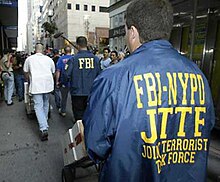
The Hostage Rescue Team (HRT) is the Federal Bureau of Investigation's (FBI) elite tactical unit. The HRT was formed to provide a full-time federal law enforcement tactical capability to respond to major terrorist incidents throughout the United States. Today, the HRT performs a number of tactical law enforcement and national security functions in high-risk environments and conditions and has deployed overseas, including with military Joint Special Operations Command units.

The Counterterrorism Division (CTD) is a division of the National Security Branch of the Federal Bureau of Investigation. CTD investigates terrorist threats inside the United States, provides information on terrorists outside the country, and tracks known terrorists worldwide. In the wake of the September 11 attacks in 2001, CTD's funding and manpower have significantly increased.
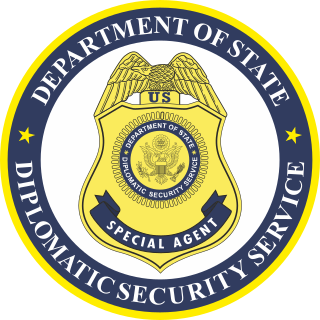
The Diplomatic Security Service (DSS) is the principal security and law enforcement agency of the United States Department of State (DOS). As the operational division of DOS Bureau of Diplomatic Security, its primary mission is to provide security to protect diplomatic assets, personnel, and information, and combat visa and passport fraud. DSS also conducts counterterrorism, counterintelligence, cybersecurity and criminal investigations domestically and abroad.
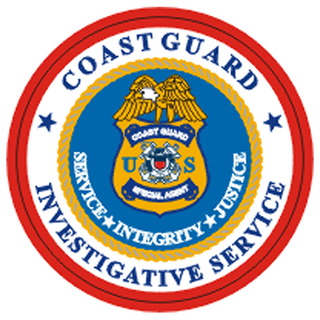
The Coast Guard Investigative Service (CGIS) is a division of the United States Coast Guard that investigates crimes where the U.S. Coast Guard has an interest. It is composed of civilian (GS-1811), active duty, reserve enlisted, and warrant officer special agents.
In the United States, fusion centers are designed to promote information sharing at the federal level between agencies such as the Federal Bureau of Investigation, the U.S. Department of Homeland Security, the U.S. Department of Justice, and state, local, and tribal law enforcement. As of February 2018, the U.S. Department of Homeland Security recognized 79 fusion centers. Fusion centers may also be affiliated with an emergency operations center that responds in the event of a disaster.

Anwar Nasser Abdulla al-Awlaki was an American-Yemeni Islamic scholar, lecturer, and jihadist who was killed in 2011 in Yemen by a U.S. government drone strike ordered by President Barack Obama. Al-Awlaki became the first U.S. citizen to be targeted and killed by a drone strike from the U.S. government. U.S. government officials have stated that al-Awlaki was a key organizer for the Islamist terrorist group al-Qaeda.
An incident response team (IRT) or emergency response team (ERT) is a group of people who prepare for and respond to an emergency, such as a natural disaster or an interruption of business operations. Incident response teams are common in public service organizations as well as in other organizations, either military or specialty. This team is generally composed of specific members designated before an incident occurs, although under certain circumstances the team may be an ad hoc group of willing volunteers.

Frank Libutti is a retired United States Marine Corps Lieutenant General who also served as the head of the New York City Police Department's Counter Terrorism Bureau, Deputy Police Commissioner, and oversaw the Department of Homeland Security's intelligence operations as Undersecretary for Information Analysis and Infrastructure Protection. Libutti's military career included time spent in Vietnam, Japan, Korea, Kenya and Somalia among assignments within the United States during which he oversaw more than 80,000 Marines.
The counter-terrorism page primarily deals with special police or military organizations that carry out arrest or direct combat with terrorists. This page deals with the other aspects of counter-terrorism:
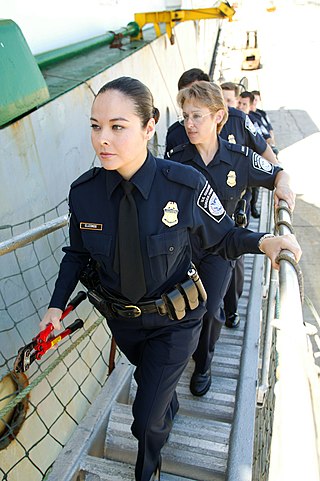
The federal government of the United States empowers a wide range of federal law enforcement agencies to maintain law and public order related to matters affecting the country as a whole.
The Communications Exploitation Section (CXS), established in December 2002, is an office of the Operations II branch of the FBI Counterterrorism Division, which is tasked with analyzing captured communications data to identify and monitor "terrorist" networks.

On November 5, 2009, a terrorist mass shooting took place at Fort Hood, near Killeen, Texas. Nidal Hasan, a U.S. Army major and psychiatrist, fatally shot 13 people and injured more than 30 others. It was the deadliest mass shooting on an American military base and the deadliest terrorist attack in the United States since the September 11 attacks until it was surpassed by the San Bernardino attack in 2015.

The Federal Investigation Agency is a border control, criminal investigation, counter-intelligence and security agency under the control of the Interior Secretary of Pakistan, tasked with investigative jurisdiction on undertaking operations against terrorism, espionage, federal crimes, smuggling as well as infringement and other specific crimes.
Anwar al-Awlaki was an American-Yemeni cleric killed in late 2011, who was identified in 2009 by the United States Federal Bureau of Investigation (FBI) as a known, important "senior recruiter for al Qaeda", and a spiritual motivator.
The following outline is provided as an overview of and topical guide to the past and present terrorism in the United States:

Domestic terrorism or homegrown terrorism is a form of terrorism in which victims "within a country are targeted by a perpetrator with the same citizenship" as the victims. There are various different definitions of terrorism, with no universal agreement about it.
Timothy G. Clemente is an American counter-terrorism expert who has worked as an FBI Special Agent and SWAT team member in Europe, the Middle East, and Africa. He also ran a cover joint operation with the Department of Energy's National Emergency Support Team, which was tasked with protecting the U.S. from attack by rogue nuclear weapons or other weapons of mass destruction. Clemente went undercover as a drug smuggler and took down members of the Cali Cartel working in narcotics and organized crime investigations in the U.S. and South America.

Mitchell Darrow Silber is the executive director of the Community Security Initiative, a partnership between the UJA-Federation of New York (UJA) and the Jewish Community Relations Council of New York (JCRC-NY), funded by The Paul E. Singer Foundation, Carolyn and Marc Rowan, and several other foundations, to help secure local Jewish institutions in the New York region. He is a professional global political risk, intelligence and security analyst and the former director of intelligence analysis at the New York City Police Department (NYPD). He is a regular commentator on political risk and terrorism related issues for both print and broadcast news outlets.
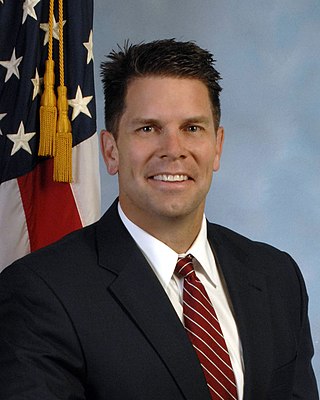
David Bowdich is an American executive and former law enforcement officer serving as the Chief Security Officer of The Walt Disney Company. Prior to this, he served as the Deputy Director of the FBI.

The New York City Police Department Counterterrorism Bureau (CT) is a division of the New York City Police Department (NYPD) responsible for preventing terrorist attacks within New York City. Former New York City Police Commissioner Raymond Kelly described the CT as "a Council on Foreign Relations with guns".



